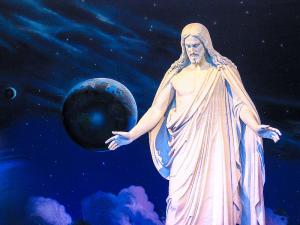I’ve spent the last three weeks carefully handling 18th century manuscripts housed in some of England’s most treasured and stories archives. Most of these sources fall into one of three general categories: journals, correspondence, or church records. The research is for my dissertation, and I’ve been doing this sort of thing for most of my adult life now: poring over records, considering their provenance and reliability, taking into account authorial point of view, comparing them with other accounts of the same or broadly similar events, attempting to contextualize their meaning, discerning their relative significance to a given question or subject, utilizing them as part of an argument, and then trying to write about my “findings” in a coherent and novel way. At least that’s how I conceive of my job as a historian.
As a historian of religion in the 18th and early 19th century British Atlantic world, most of the sources I use are like the ones I describe above: personal writings and church records of various sorts. While my research is driven by an interest in addressing generally broad themes—migration, slavery, the intersections of political and religious ideology and institutions, etc—I take particular satisfaction in attempting to learn and narrate the lives and experiences of the women and men who were the people and personalities who shaped, participated in, and were shaped by the larger shifts in religious culture I attempt to describe in my research. And while journals and letters and membership lists typically provide the majority of the information I need to do so, some of my favorite sources are the random scraps of paper that provide some small insight into the personality or interests of one of the historical individuals in question: a will, an inventory of a personal library or other possessions, marginalia scribbled onto the pages of a book, or a scrap of paper reminding the person to do something. Sometimes these more random sources prove crucial to my research. More often than not, they don’t. Inevitably, I always find them fascinating.
I thought about one such source I came across earlier this week while watching the LDS Church’s 183rd Annual General Conference this weekend. The source was nothing particularly remarkable, and is not (I don’t think) especially relevant to my current research. It is a list, penned by a young British missionary in the West Indies in 1804, of recommended clothing future missionaries sent there should be outfitted with. It was sandwiched in between lengthy correspondence sent between hundreds of other such missionaries in far-flung corners of the world and the governing committee of the recently-established Methodist Missionary Society in London. More than a simple list, I caught a unique glimpse of the personality of this missionary. His (at least in this moment) somewhat brash manner and his dry sense of humor shone through the words he wrote to a committee of men without any personal experience or first-hand knowledge of Caribbean climate and terrain. Like I said, not crucial to my research, but I now had a brief glimpse into the personality behind the short biographical details (date and place of birth, year entered the ministry, etc) that other more conventional sources provided.
What prompted me to think of the source was something a friend posted on facebook Saturday evening. It was a link to the Pinterest page of Bonnie Oscarson, the newly-called and sustained President of the Church’s General Young Women’s Presidency. Taking a quick glance at the various “boards” she has created and the pinned pages therein, I realized that this unique primary source filled in some gaps in the one paragraph biography provided by the church-owned Deseret News. Putting on my researcher cap, questions immediately flooded my mind: Is President Oscarson the first general leader in the LDS Church to maintain a Pinterest page? If so, is there any significance to that fact? Will she continue to maintain the page now, or silently take it down? Will she wake up in the morning to thousands of new followers on the site, as her page gets re-shared on various social media sits and Mormon women (and men?) and their teenaged daughters (and sons?) want a closer look at what the new Young Women’s President likes and pins? What do we make of the fact that she has a Pinterest page at all? Is this expected, because she is, after all a Mormon woman in the 21t century? Or is this unique and unexpected, because she’s a church leader and this page provides personal insight into her life and interests in a way few other church leaders have every allowed? And just what insight do we actually learn from what she’s pinned? What are we to make of the fact, for instance, that President Oscarson’s board of “interesting women” includes only the following five females: Coco Chanel, Jane Austen, Carmen Miranda, Mother Theresa, and Irena Sendler? She apparently also likes the Hunger Games trilogy and is really into home decoration and design.
While I do wonder what clues such a page might contain for the aims of Oscarson’s Presidency over the next several years, I’m also curious about how historians 50 or 100 years from now might make use of a digital source like a Pinterest page. Will they use it to fill in tangential information about personality quirks and individual interests unavailable in other sources (like I suggest here), or in some other way or ways? What other questions can be asked of such sources, both now and in the future?











